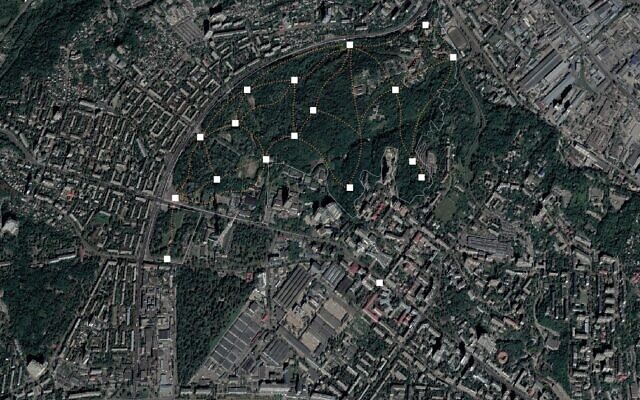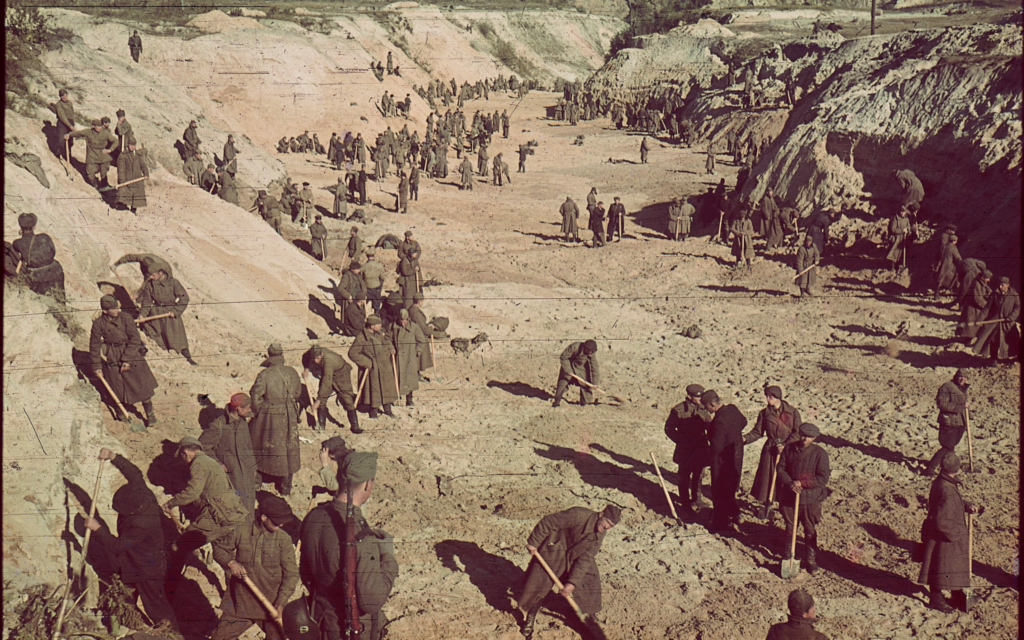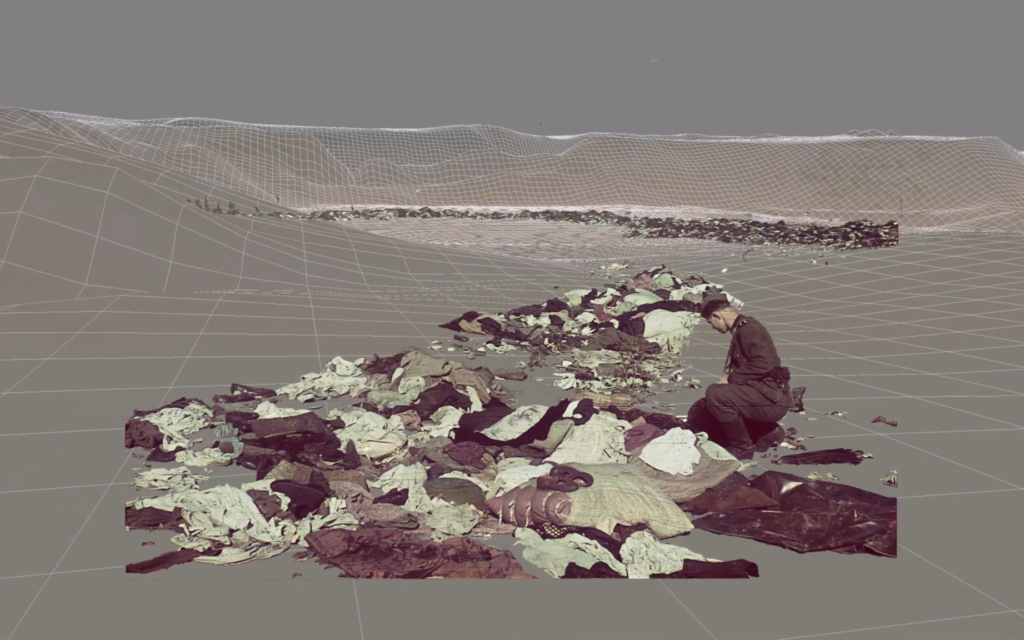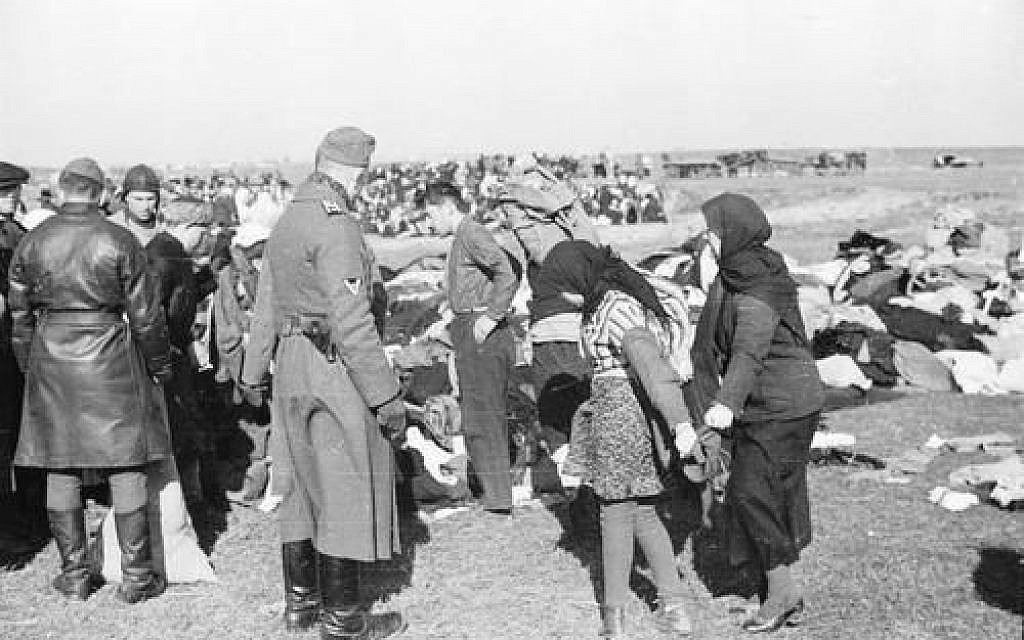
Covering 370 acres, site of central ‘Holocaust by bullets’ massacre will become one of world’s largest commemorations for Jewish genocide
Reversing plans to build one central museum at the site of the Holocaust’s largest open-air massacre, the Babyn Yar Holocaust Memorial Center (BYHMC) announced plans on January 21 to construct 12 buildings across 370-acres of the filled-in Kyiv ravine where over 100,000 people were slaughtered during World War II.
On September 29 and 30, 1941, German Nazis and Ukrainian collaborators murdered 33,771 Jews at “Grandmother’s Ravine” on the edge of Ukraine’s capital. An additional 70,000 people were murdered at Babyn Yar during the next three years, including Jews, Ukrainian resisters, Roma, and disabled people.
“Currently, there are far too many people unaware of the nature of the place,” BYHMC artistic director Ilya Khrzhanovsky told The Times of Israel. “If you visit Babyn Yar today, you will see families relaxing and playing as if it were a regular park.”
Referring to Babyn Yar as “Europe’s largest mass grave,” the memorial center said “the new museum complex will transform the area from a place of terror and killing, into a place of peace and tranquility.”
By way of comparison, Israel’s Yad Vashem campus is about one-eighth the size of the complex planned for Kyiv.

One of the new museums will memorialize the “Holocaust by Bullets” in which 1.5 million Jews were murdered across Ukraine and Eastern Europe. During this initial phase of the genocide, German “Einsatzgruppen” units partnered with local collaborators to murder Jews close to where they lived.
In addition to several museum buildings, the plan calls for a structure depicting the names of victims and a “religious/spiritual center” complete with a synagogue, church and mosque. There will also be research and education centers on-site.
As chair of the BYHMC supervisory board, Israeli human rights icon Natan Sharansky knows first-hand about the suppression of Holocaust memory. Growing up in Soviet-era Ukraine, Sharansky learned nothing about the events at Babyn Yar.

“The concept which was presented is both very interesting and amazing,” said Sharansky. “It demonstrates how the museum and educational center will not only both be high quality, but at the same time different from many other Holocaust centers. As such, it will help fill a vacuum in the field of Holocaust studies.”
Memorial designers are planning 15 themed sites related to where the massacre took place and the subsequent erasures of memory. The points will be connected by a winding path evocative of the ravine system’s former topography.
“When you visit Babyn Yar, the most powerful spots are from where you can actually see raw ravines, very similar to those where the shootings took place which were filled-in [with industrial waste] during the Soviet era,” said Khrzhanovsky. “By using the geography and topography of the area, we are able to create a physical and emotional journey for visitors,” said the film director.

The 1941 German “aktion” at the ravine was the first open-air massacre to take place in a European capital. Thousands of Ukrainians observed the victims being herded to the ravine or participated in the massacre as guards, drivers, cooks, cleaners and other roles, as documented by Father Patrick Desbois.
‘The quiet of Babyn Yar’
As with most large-scale Holocaust memorial projects, not everyone agrees with the plan.
“For me, the power and importance of sights of such painful memory and heritage are in their authenticity and raw state,” said Jonny Daniels, founder and president of the Holocaust memory organization From the Depths, based in Poland.
In the past, Daniels has criticized what he sees as the “over-development” of Holocaust killing sites, including construction at Sobibor in Poland.
“Whilst it’s obviously so important to build memorials, I’m worried about overshadowing them with monuments, places of worship and buildings,” Daniels told The Times of Israel. “For me, the quiet of Babyn Yar is what affects me most,” said Daniels.

The BYHMC has been conducting research into the massacre for several years. So far, 20,000 previously unknown names of victims have been recovered and verified. For the first time, scientists pin-pointed the relatively small area — approximately 500 feet in length — of the 1941 shootings and mass grave.
“It is important to understand that we absolutely regard Babyn Yar as a sacred space,” said Khrzhanovsky. “This characterizes our whole approach.”
According to Khrzhanovsky, construction will not take place where the killings occurred. Some buildings planned for the complex will be built on above-ground platforms in order to preserve archeological remains below, he added.
Between now and the fall, a series of activities will be held to commemorate the Babyn Yar massacre’s 80th anniversary. The synagogue and an exhibition space are set to be completed before September’s main remembrance event.
Source: The Times of Israel